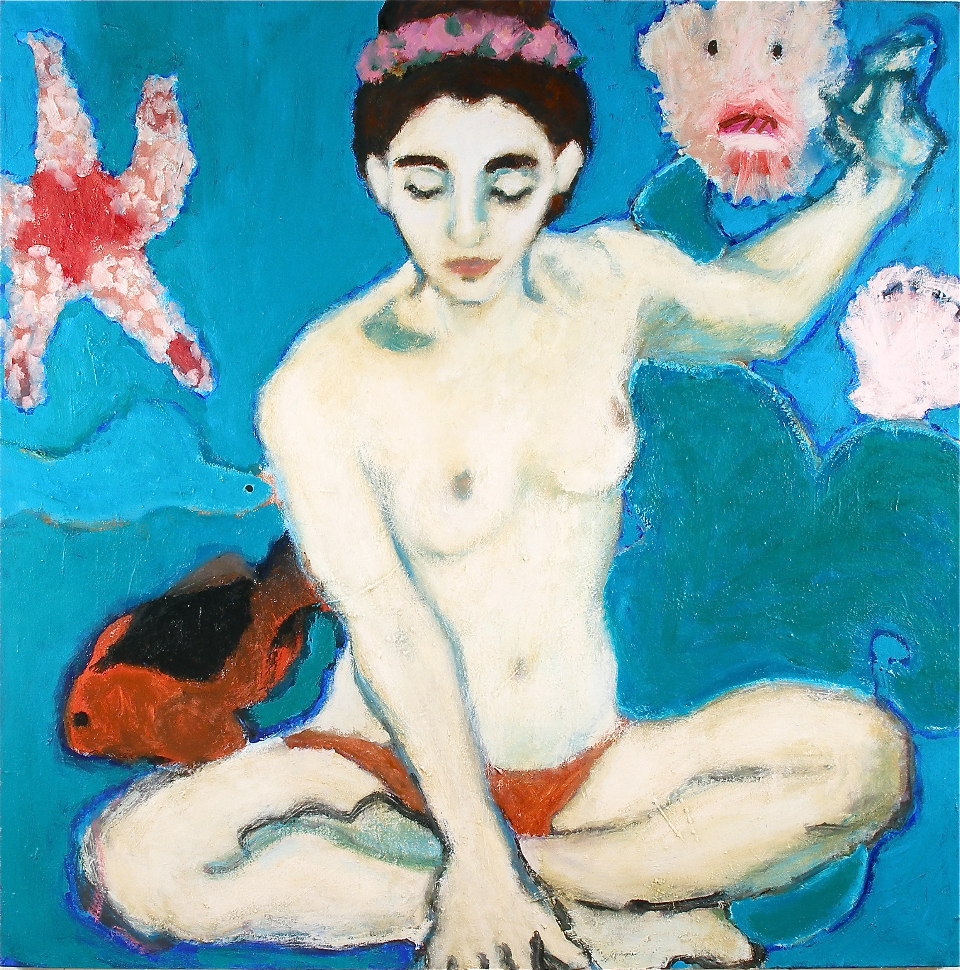
I practice Iyengar yoga. Yoga is a discipline. It is grounded in a set of teachings about the body and the mind. What this practice has to do with spirituality is, for me, an open question.
There is no question about one thing: to do yoga in America today is to make a statement. Doing yoga says that you are young and flexible, or maybe just that you are older and determined. You care about more than “just exercise.” You, and more than 15 million other people, are in recovery from a steady diet of aerobics or running, or too much time spent with re-runs of Sex and the City. Even those who don’t do yoga will gesture vaguely toward the hope that they “should” do yoga, or “get back to” yoga. It is a $5.7 billion dollar industry, with more than 70,000 teachers. The old days of yoga practitioners wearing their tie-dyed T-shirts to the food co-op seem long gone.
I do Iyengar yoga. Not Ashtanga, or Bikram, or the oh-so-generic “Vinyasa” yoga. Naming your yoga is a statement of identity. It situates you as part of a yoga denomination, with a very particular set of doctrines about the way yoga should be practiced. To do Iyengar is very different than joining into the “flow” of Vinyasa classes, where things go quickly, and sun salutations mix with twists and backbends. There, you might get some music to set the pace—a little Native American flute, perhaps a sitar-inflected hip hop mix, as the teacher tells you to “do what feels good to you.” I’ve even done Oms with Amy Winehouse moaning along. (I’ll admit, I kind of liked it.) But none of that can be heard in the stolid silence of Iyengar classes. There you find no music, no dancing through a class with your individual flow. You don’t do what “feels good.” You do what is needed, as you launch into an entire class of backbends, or perhaps an hour and a half spent perfecting triangle pose.
As avowed atheist, with only a tiny inclination toward sentimental humanism, I haven’t had much interest in the yoga sutras or the various books of wisdom that circulate in the yoga world. I’m dubious about collections of yoga poetry or daily mediations. (Although I do have a real fondness for the title of one of those “wisdom” books, which offers a fine bit of Buddhist wariness: After The Ecstasy, the Laundry.) When I challenge my body, quiet my mind, and pay attention to the state of things—this brings me a kind of joy. It is a different joy that what I feel when drinking wine with my friends, and different, too, than the joy of teaching a good class or holding a child’s hand. But a spiritual joy? I liked it when we called that poetry. Or happiness.
I do Iyengar yoga, and as such I am part of a long genealogy. Yoga is a spiritual tradition, thousands of years old, with a complex history intertwined with the development of Indian religious traditions. Americans were fascinated with their understandings of “Hindoo” practices from the mid-19th century onward. Emerson and Thoreau both eagerly read as much as they could about Hinduism. As one yoga history puts it, Thoreau’s A Week on the Concord and Merrimack Rivers “stacks quotes from the Bhagavad-Gita, like cordwood, and recommends it as highly as the Bible.”
Modern posture-based yoga, however, emerged alongside of the US and European physical culture movement of the late 19th century, which associated moral health with physical health, including body-building and gymnastics. The YMCA was a global influence on the early development of this model of intense, individualized focus on athletic health for the masses. The YMCA was big in India, and it had a real influence on yoga’s modern development. In 1905 bodybuilder Eric Sandow traveled to India to promote physical culture; by that time, he was, according to Mark Singleton, “already a cultural hero.”
While Indians were embracing physical culture along the Western model, they were also embracing and re-imagining yoga into a form of nationalist pride and anti-imperialist cultural production. As we might imagine, there were competing schools and approaches, but most shared the sense that India needed to re-energize its ancient traditions with a vital awakening of the (male) body. At this point, several sages also began to export their own visions of the practice of yoga to the West. Some, like Vivekananda, taught breathing exercises along with philosophical lectures, while others introduced the few simple postures associated with hatha yoga in India.
Page 1 of 4 | Next page